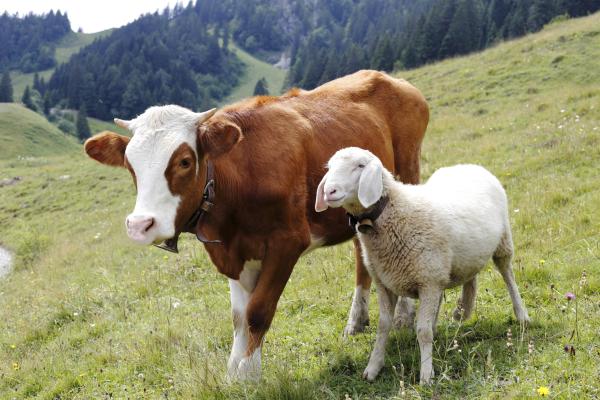Ruminant animals are a remarkable group of herbivores able to convert low-nutrient plant matter into body mass and valuable products such as milk, meat, and leather. Thanks to their highly specialized digestive system, ruminants have played a crucial role in agriculture and ecosystems worldwide. What makes a ruminant unique? Which animals are ruminants? Let’s explore their characteristics, digestive system, feeding habits, and some of the most common examples.

A ruminant is a mammal that chews its food more than once, regurgitating and re-chewing it—a process known as "rumination." Key characteristics include:
Multi-stage chewing: Ruminants swallow food, regurgitate it as “cud,” and chew it again for more efficient digestion.
Herbivorous diet: They feed exclusively on plant material—mainly grasses, leaves, shoots, and branches.
Specialized teeth: Their molars are broad and flat, perfect for grinding tough plant fibers. Their jaws move side-to-side to help break down vegetation.
Ruminants inhabit an incredibly wide range of environments, from rainforests and mountains to tundra, plains, savannas, deserts, and semi-deserts. Their ability to efficiently digest fibrous plants allows them to thrive in places where few other large mammals can survive.
Ruminants are also called polygastric animals because their stomach is divided into four specialized chambers—unlike single-stomach animals such as humans, horses, or pigs.
Rumen: The largest chamber, filled with billions of microbes that ferment and break down cellulose and other plant fibers.
Reticulum: Works with the rumen, traps larger food particles, and initiates regurgitation for rumination.
Omasum: Absorbs water and some nutrients from partially digested food.
Abomasum: The “true” stomach, similar to that of non-ruminants, where gastric juices digest proteins.
The first three chambers are especially rich in bacteria and protozoa that ferment tough plant material, producing volatile fatty acids (VFAs) like acetic, propionic, and butyric acids—key sources of energy. The abomasum and intestines then absorb these nutrients.
This advanced digestive system allows ruminants to extract maximum nutrition from plant matter that many other animals cannot use.

Ruminants mainly consume a wide range of forages—grasses, leaves, twigs, and shrubs—and are able to digest cellulose, hemicellulose, and pectin. This makes them essential for converting low-quality vegetation into high-quality protein (meat and milk).
However, rumination produces methane, a potent greenhouse gas. Ruminants are a major global source of methane emissions, which contributes to climate change.
The world’s most important domestic ruminant, raised for beef, milk, leather, and draft power. Cattle were first domesticated over 10,000 years ago. Diet management influences the types of products (meat vs. milk) they yield.
One of the first ruminants domesticated by humans. Sheep are highly adaptable, thriving in arid and semi-arid environments, and provide meat, milk, and wool.
Extremely versatile ruminants, goats thrive in diverse and challenging environments, from rocky hills to deserts. They produce milk, meat, and fiber and were among the first livestock species domesticated by humans.
This family includes species such as red deer, reindeer (caribou), and moose. Deer occupy a wide range of habitats. Reindeer are adapted to arctic environments and eat lichens, while moose often feed on aquatic plants.
North American bison are massive ruminants (up to 1,400 kg) that efficiently convert tough prairie grasses into muscle. They were heavily hunted for their hides and meat but are now protected and sustainably managed.

Ruminant animals are nature’s master converters, transforming poor-quality vegetation into valuable resources for ecosystems and human societies. Their unique digestive systems make them central to grassland, tundra, and desert ecosystems, as well as global agriculture. Understanding ruminants helps us improve livestock management, environmental protection, and animal science. Interested in learning more about cattle, sheep, deer, or sustainable livestock? Follow our animal encyclopedia for expert content!
Bibliography
De Lucio, M. (2007). Volatile fatty acids, a source of energy in ruminants. Veterinary Science: National Autonomous University of Mexico.
Ramírez-Pérez, A. H., Buntinx, D., & Silvia, E. (2010). Carbohydrate, Lipid, and Protein Metabolism. Nut. Ani. Biochemistry, 2(12), 9.
Ramírez Lozano, R. (2017). Principles of ruminant nutrition. Bloomington: Palibrio.
animal tags: Ruminant Animals
We created this article in conjunction with AI technology, then made sure it was fact-checked and edited by a Animals Top editor.